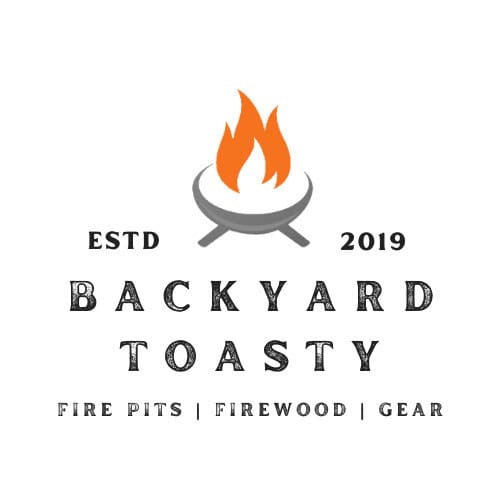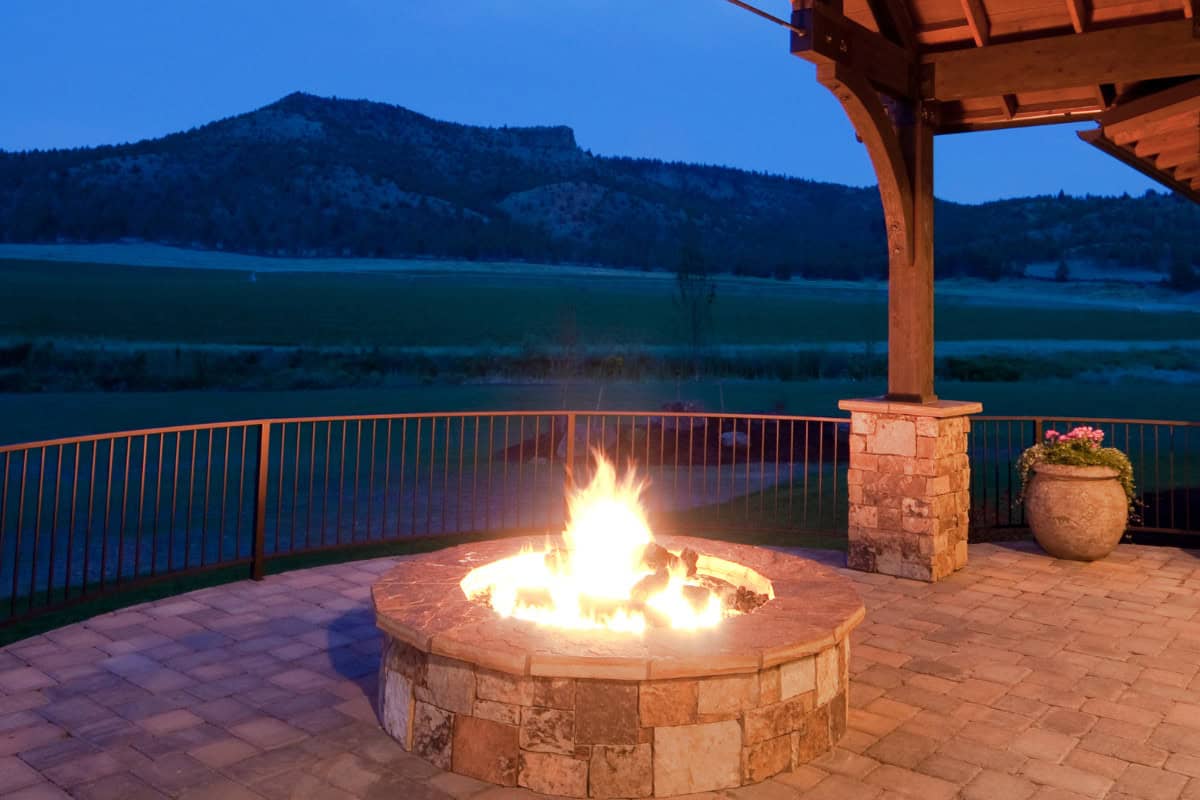
Fire pit lovers often wonder if they can use a fire pit under a covered patio safely and legally. This is a common question, especially for those who want to enjoy cozy evenings outdoors, even when the weather isn’t perfect.
While the idea sounds inviting, using a fire pit in an enclosed area or under a roof comes with unique safety, ventilation, and legal considerations.
In this guide, we’ll break down everything you need to know about using a fire pit under a covered patio, including safety tips, maintenance, and the best alternatives.
**Before you go any further, remember this is a serious safety issue. Always contact your local fire department or a licensed fire pit contractor for advice specific to your area. Don’t skip this step—local rules and risks can vary, and expert guidance will help keep your backyard safe.**
- Understanding the Risks of Fire Pits Under Covered Patios
- Safety First: Key Considerations
- Ventilation and Clearance Requirements
- Choosing the Right Fire Pit
- Installation Tips and Best Practices
- Local Regulations and Permits
- Maintenance and Ongoing Safety
- Alternatives to Fire Pits Under Covered Patios
- FAQs: Using a Fire Pit Under Covered Patios
- Wrap-up: Using a Fire Pit Under Covered Patios

Understanding the Risks of Fire Pits Under Covered Patios
Before you set up your fire pit under a covered patio, it’s important to understand the risks. Fire pits generate intense heat, smoke, and sometimes flying embers.
When you use a fire pit in an enclosed area, these hazards multiply. Covered patios can trap smoke and heat, increasing the risk of fire and making it harder to breathe.
Smoke buildup can also lead to carbon monoxide poisoning, which is a serious health risk. Even if your covered patio is open on the sides, poor ventilation can still allow dangerous gases to accumulate.
Additionally, placing a fire pit too close to your home or other structures increases the risk of accidental fires.
Transitioning from risks, let’s look at how you can use a fire pit safely in these situations.
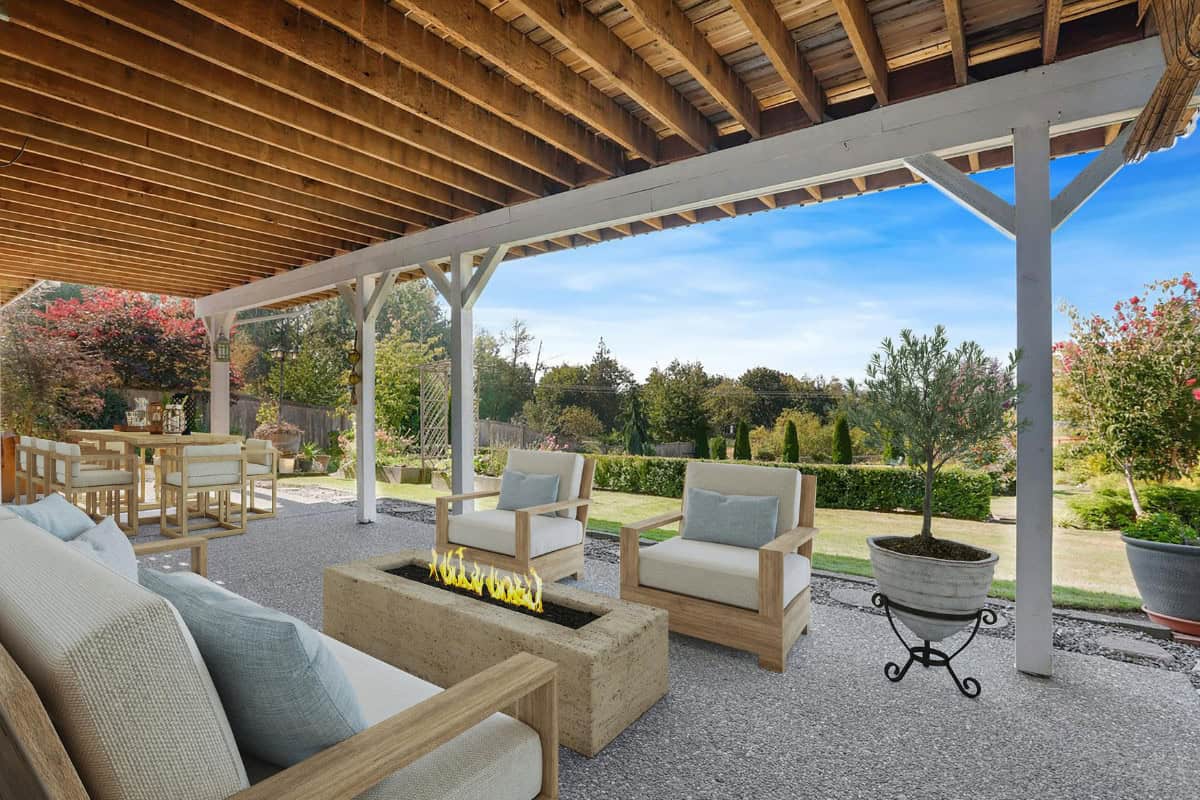
Safety First: Key Considerations
If you’re determined to use a fire pit under a covered patio, safety must be your top priority. Start by reading your fire pit’s installation manual and checking for any warnings about covered or enclosed spaces.
Most manufacturers recommend specific clearance and ventilation requirements. Ignoring these can void warranties and, more importantly, put your home at risk.
Wood-burning fire pits are generally not safe when using fire pit in enclosed area like covered patios.
They produce more smoke, sparks, and creosote, which can stick to surfaces and increase fire hazards.
Instead, consider gas fire pits, which burn cleaner and are easier to control. However, even gas fire pits require careful handling.
Always keep a fire extinguisher nearby and never leave your fire pit unattended. Make sure your patio and surrounding area are built with fire-resistant materials.
Remove flammable items like cushions, rugs, or decorations from the immediate area.
Transitioning from safety, let’s talk about the importance of ventilation.
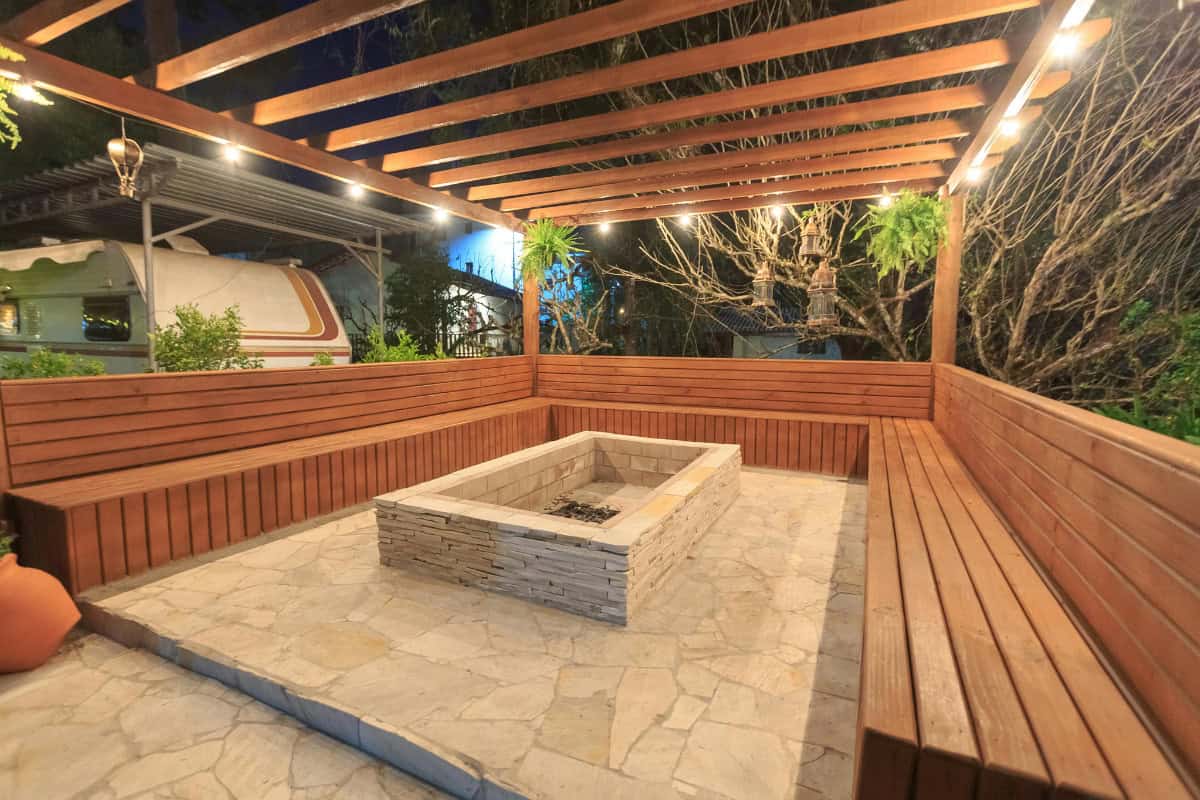
Ventilation and Clearance Requirements
Proper ventilation is crucial when using a fire pit under a covered patio. Without enough airflow, smoke and dangerous gases can build up quickly.
If your patio is enclosed on three or more sides, it may not be safe to use a fire pit at all.
Install vents or a chimney to help direct smoke away from your seating area. Keep the sides of your patio as open as possible for maximum airflow.
For gas fire pits, make sure the burner ports are clear and functioning properly.
Clearance is just as important as ventilation. Most experts recommend at least 10 to 20 feet of space between your fire pit and any combustible materials, including the patio cover, walls, and furniture.
Always follow the manufacturer’s guidelines for minimum clearance. If you’re unsure, err on the side of caution and give your fire pit plenty of space.
Transitioning to fire pit choices, let’s see which types work best under covered patios.

Choosing the Right Fire Pit
Not all fire pits are created equal, especially when it comes to using them under a covered patio or in an enclosed area.
Propane and natural gas fire pits are your best bet. They produce less smoke and fewer embers than wood-burning models, making them safer for use in areas with limited ventilation.
Look for fire pits that are specifically designed for covered or partially enclosed spaces. These models often have built-in safety features and are tested for use in such environments.
Always check for safety certifications before making a purchase.
Avoid wood-burning fire pits under covered patios. The risk of sparks, smoke, and creosote buildup is just too high. If you want a sleek, modern look, consider a fire pit table.
These combine the warmth and ambiance of a fire pit with the functionality of an outdoor table.
Transitioning to installation, let’s cover the best practices for setting up your fire pit.
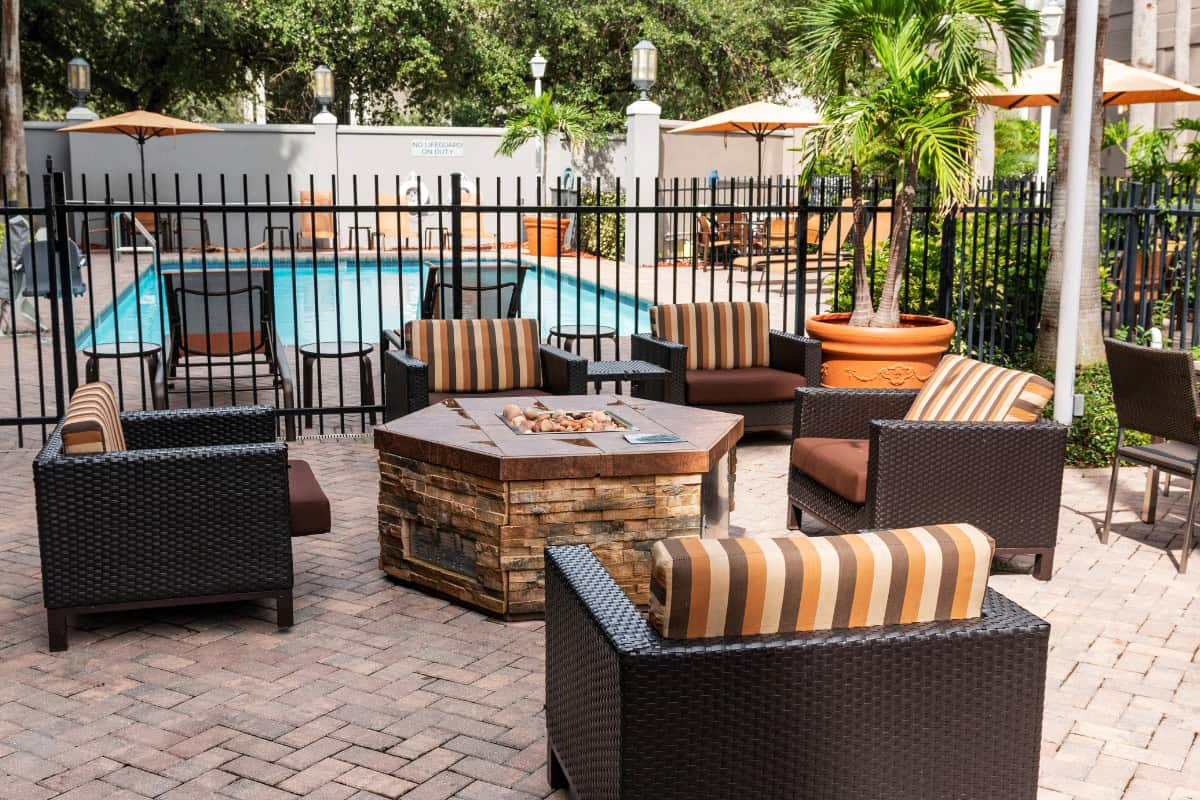
Installation Tips and Best Practices
Installing a fire pit under a covered patio requires careful planning. Start by choosing a non-combustible surface, such as concrete, stone, or brick, to place your fire pit on.
Avoid placing it directly on wood, grass, or composite decking, as these materials can catch fire, or at minimum suffer heat damage.
Make sure your patio cover is high enough to prevent heat damage. Most fire pit manufacturers recommend a minimum clearance of 7 to 10 feet between the top of the fire pit and the ceiling.
If your patio cover is lower than this, it’s best to move your fire pit to a more open area.
Keep the area around your fire pit free of clutter and flammable objects. This includes patio furniture, cushions, curtains, and decorative items.
Regularly inspect your fire pit and patio for signs of wear or damage, such as cracks, rust, or discoloration.
Transitioning to legal considerations, let’s see what the law says about fire pits under covered patios.
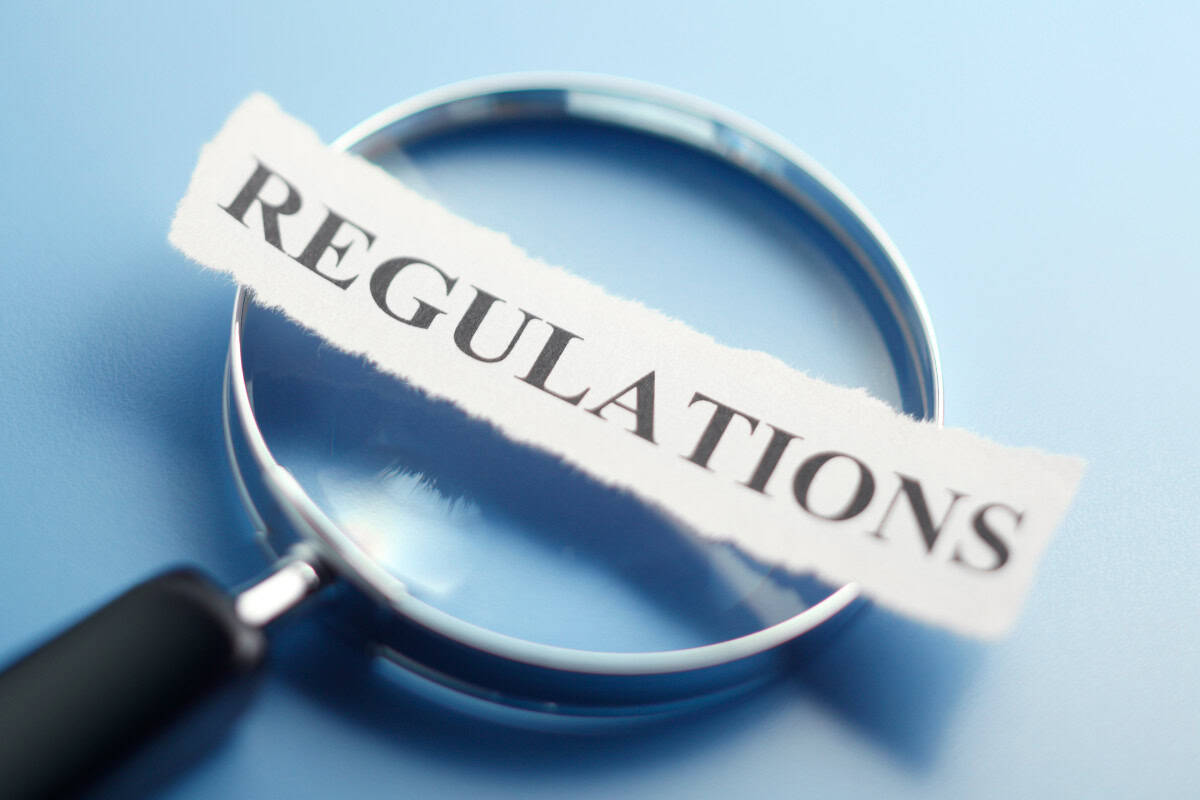
Local Regulations and Permits
Before you install a fire pit under your covered patio, check your local fire codes and building regulations.
Some cities and counties prohibit the use of fire pits in enclosed or partially enclosed spaces. Others may require a permit for installation.
Contact your local fire department or building inspector for guidance. You can find your local fire department contact information through the National Association of State Fire Marshals directory. They can tell you what’s allowed in your area and help you avoid costly fines or safety violations.
If you live in a community with a homeowners’ association (HOA), check their rules as well.
Permits may be required for both gas and wood-burning fire pits. The process usually involves submitting plans and scheduling an inspection.
Don’t skip this step—following the rules keeps you and your neighbors safe.
To help you navigate the permit process and ensure compliance, use this comprehensive checklist. It covers everything from initial application steps to final inspection requirements.
🔥 Permit and Inspection Checklist for Fire Pits Under Covered Patios
Thinking about adding a fire pit under your covered patio? Before you light that first fire, make sure you’re following local rules. This permit and inspection checklist will help you stay safe and compliant.
Permit Application Steps
🔥 Check Local Fire Codes
• Visit your city or county website.
• Search for “outdoor fire pit regulations.”
• Note any restrictions for covered patios or enclosed areas.
🔥 Contact Local Authorities
• Call your local fire department or building office.
• Ask about required permits for fire pits.
• Request a copy of the official guidelines.
🔥 Prepare Documentation
• Draw a simple site plan showing your patio and fire pit location.
• List materials and fuel type (wood, propane, natural gas).
• Include manufacturer’s instructions or safety certifications.
🔥 Submit Permit Application
• Complete the permit form (usually found online or at city hall).
• Attach your site plan and documentation.
• Pay any required fees.
🔥 Schedule Inspection
• Once approved, schedule an inspection with your local fire marshal.
• Be ready to show your setup and answer questions.
🔥 Fire Pit Inspection Checklist
| Inspection Item | Pass/Fail | Notes |
|---|---|---|
| 🔥 Fire pit placed on non-combustible surface | ☐ | (e.g., concrete, stone) |
| 📏 Minimum clearance from patio cover | ☐ | (usually 7–10 feet) |
| 💨 Adequate ventilation/airflow | ☐ | (open sides or installed vents) |
| 🚫 No flammable materials nearby | ☐ | (cushions, curtains, etc.) |
| 🔧 Gas lines/fittings checked for leaks | ☐ | (if using gas fire pit) |
| 🧯 Fire extinguisher or hose nearby | ☐ | |
| 📄 Manufacturer’s instructions available | ☐ | |
| 📜 Local codes and permit displayed | ☐ |
Quick Tips
• Keep a copy of your permit handy.
• Update your checklist after every inspection or major change.
• Review your local fire codes yearly for updates.
Important: If you have any questions or concerns, don’t hesitate to contact your local fire department, HOA, or a licensed fire pit installer.
Transitioning to maintenance, here’s how to keep your fire pit safe and functional.
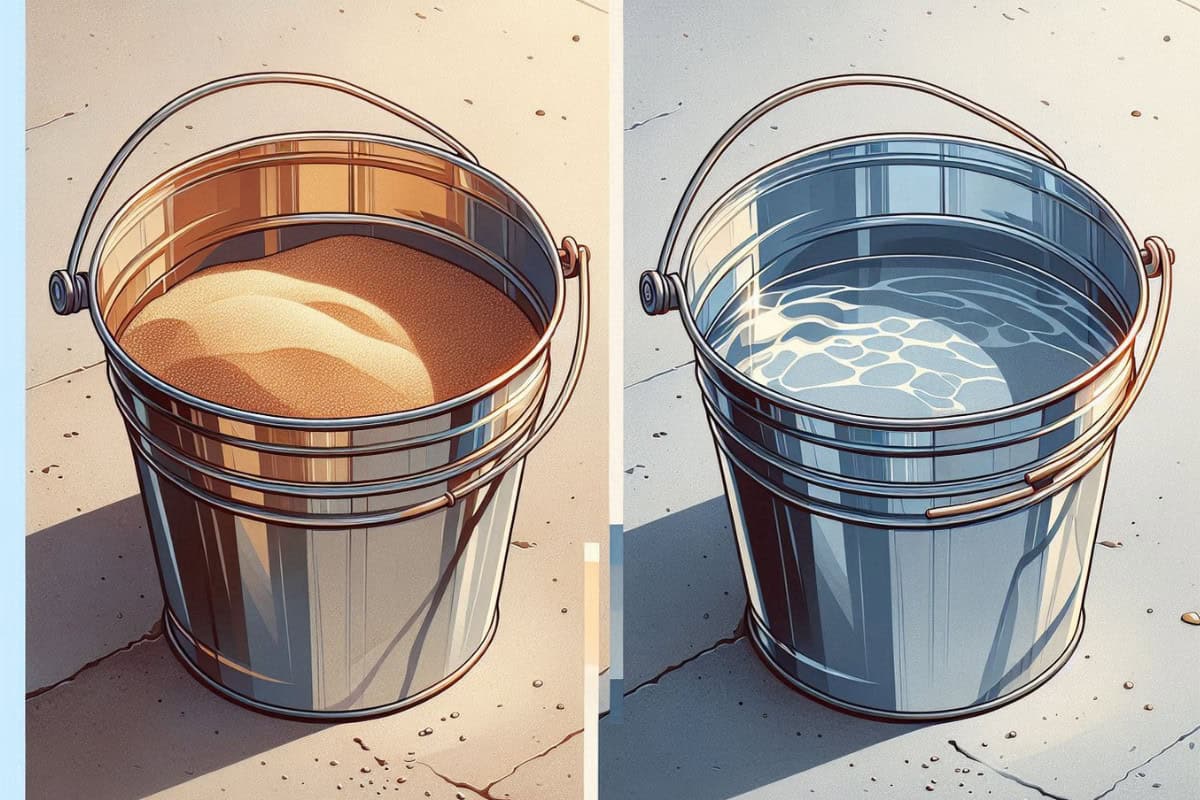
Maintenance and Ongoing Safety
Keeping your fire pit under a covered patio in top shape is easy if you follow a few simple steps. Regular maintenance not only extends the life of your fire pit but also keeps your family safe.
Regular Cleaning
After each use, remove ash and debris from your fire pit. This prevents buildup, which can block airflow and increase the risk of fire.
Wipe down the surfaces with a damp cloth to remove soot and residue. For gas fire pits, check the burner ports for blockages and clear them gently.
Routine Inspections
Inspect your fire pit before each use for cracks, rust, or loose parts. Examine gas lines and connections for leaks—use soapy water to check for bubbles.
If you see any damage or suspect a leak, repair or replace the affected parts before using your fire pit again.
Check your patio cover and surrounding area for signs of heat damage or discoloration. If you notice any issues, increase the clearance or move your fire pit to a safer location.
Safe Fuel Storage
Store propane tanks or gas canisters outside, away from heat and direct sunlight. Keep all fuel at least 10 feet from the fire pit when not in use.
Never store wood, paper, or flammable liquids near your fire pit.
Fire Safety Equipment
Always keep a fire extinguisher or a bucket of sand nearby. Have a garden hose ready in case of emergencies.
Make sure everyone in your household knows how to use your fire safety tools.
Transitioning to alternatives, let’s look at safer ways to stay warm under your covered patio.

Alternatives to Fire Pits Under Covered Patios
If you decide that using a fire pit under your covered patio is too risky, there are plenty of alternatives.
Electric patio heaters offer warmth without the dangers of open flames or smoke.
They’re easy to use, energy-efficient, and safe for enclosed spaces.
Tabletop fire features with gel fuel provide ambiance with less risk. These small, contained units are designed for use on tables and produce very little smoke or heat.
They’re perfect for adding a cozy touch to your covered patio without the hazards of a traditional fire pit.
If you’re set on having a fire pit, consider placing it in an open area of your yard. This gives you all the benefits of a fire pit without the safety concerns of using it under a roof.
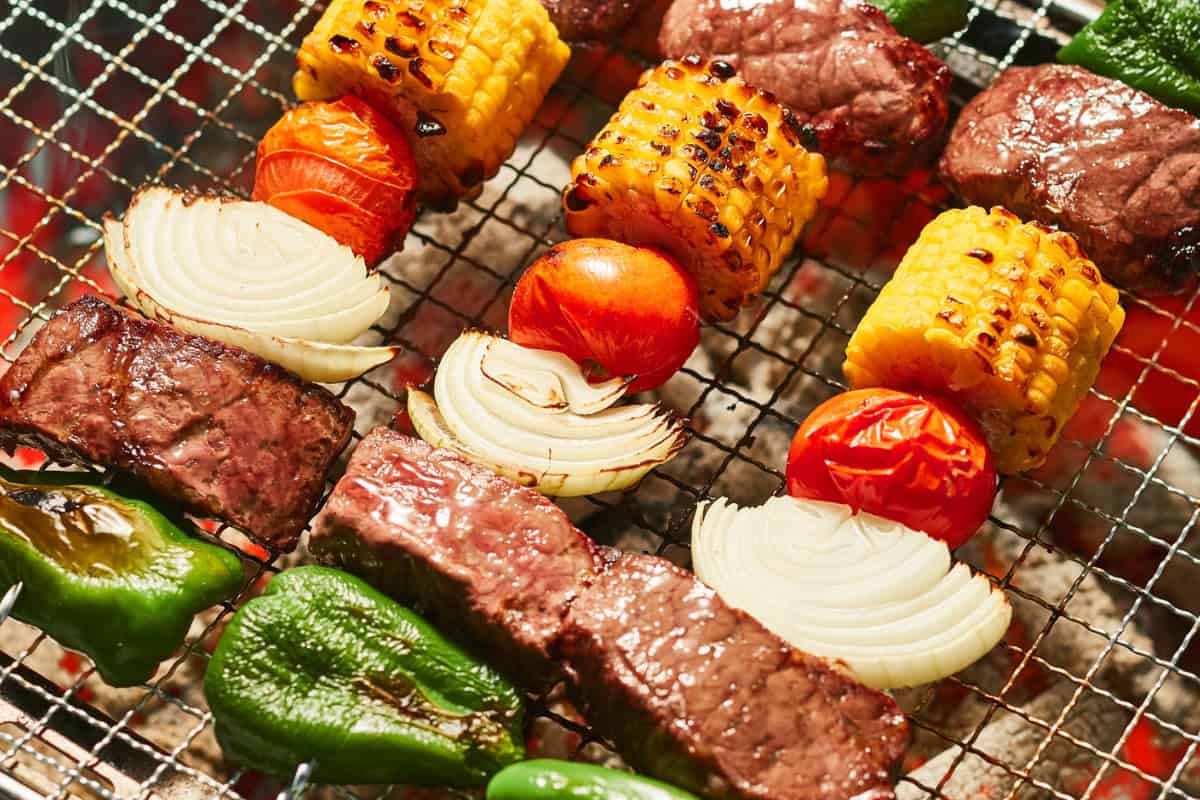
FAQs: Using a Fire Pit Under Covered Patios
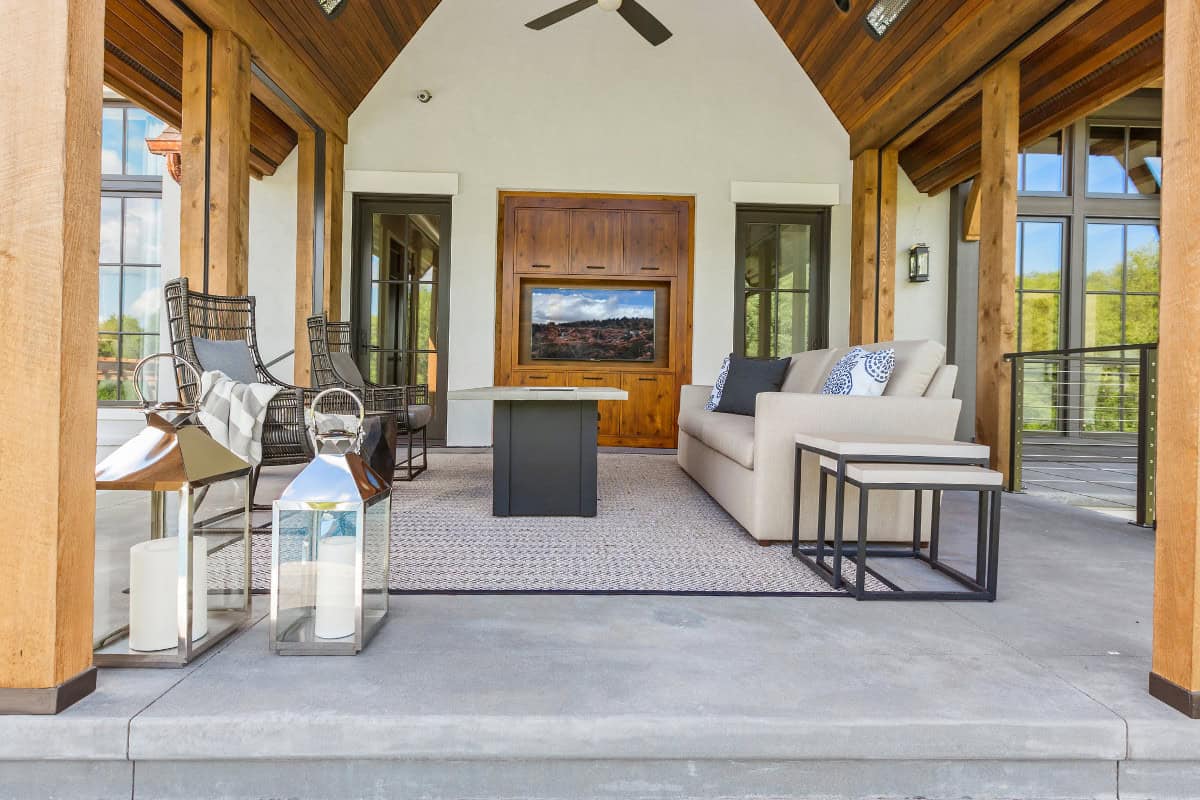
Wrap-up: Using a Fire Pit Under Covered Patios
Using a fire pit under a covered patio can be tempting, but it’s important to prioritize safety and follow local regulations.
Always choose the right type of fire pit, ensure proper ventilation and clearance, and keep up with regular maintenance.
If in doubt, consider safer alternatives like electric heaters or tabletop fire features. With the right precautions, you can enjoy your backyard toasty nights with peace of mind.

